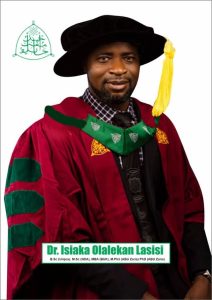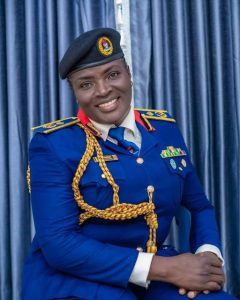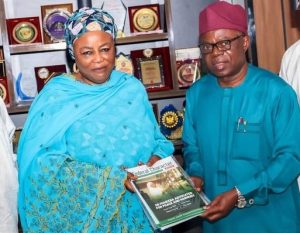NBA teams mostly know the 2021 domestic field, but the due diligence never stops. Some executives are now starting to travel overseas. College scouts are using this time to rewatch tape and gather intel for the draft.
A few international prospects are helping themselves right now and climbing the charts. It wouldn’t be shocking if three international players wound up going in the lottery, a surprising development based on expectations prior to the season.
We’re still waiting for some prospects to announce whether they’ll be declaring or returning. Until then, here’s our current ranking of the best 50 players likely available in this summer’s draft.
Nos. 50-41
50. Max Abmas (Oral Roberts, PG/SG, Sophomore)
49. David Duke (Providence, SG, Junior)
48. Ariel Hukporti (Kedainiai Nevezis, C, 2002)
47. Herbert Jones (Alabama, SF, Senior)
46. Isaiah Livers (Michigan, SF, Senior)
45. Austin Reaves (Oklahoma, SG, Senior)
44. Charles Bassey (Western Kentucky, C, Junior)
43. Nah’Shon Hyland (VCU, SG, Sophomore)
42. Santi Aldama (Loyola MD, PF, Sophomore)
41. Rokas Jokubaitis (Zalgiris, PG/SG, 2000)
Max Abmas cracks top 50 Arizona’s Bennedict Mathurin returning to Arizona opens up a spot on our top-50 board. It
goes to Oral Roberts’ Max Abmas, who drew attention in the NCAA tournament and forced scouts to go back and look at more regular-season film.
The numbers say he’s the nation’s leading scorer, but more importantly for NBA teams, he’s also the best shooter, ranking first in both pull-up and spot-up points per possession, per Synergy Sports.
He went overlooked due to his 6’1″, 165-pound size and limited playmaking skills. But his shooting accuracy, range and versatility are strong enough to warrant consideration as a shot-making specialist. And he shot 16-of-34 on floaters, an important skill for a guard lacking size, strength and athleticism.
There is obviously bust potential here based on his body, but Abmas feels like an enticing gamble in the mid-to-late second round. We’re still waiting to hear about a draft decision.
Nos. 40-31
40. Greg Brown (Texas, PF, Freshman)
39. Kessler Edwards (Pepperdine, SF, Junior)
38. Jeremiah Robinson-Earl (Villanova, PF, Sophomore)
37. Terrence Shannon Jr. (Texas Tech, SG/SF, Sophomore)
36. Isaiah Todd (G League Ignite, PF, 2002)
35. Marcus Bagley (Arizona State, SF/PF, Freshman)
34. Joel Ayayi (Gonzaga, PG/SG, Junior)
33. Day’Ron Sharpe (North Carolina, C, Freshman)
32. Trey Murphy III (Virginia, PF, Junior)
31. Brandon Boston Jr. (Kentucky, SF, Freshman)
Rethinking Day’Ron Sharpe
There are two ways to look at Sharpe—either as an outdated low-post player who can’t shoot, or an outlier center with a unique combination of skills for tracking down missed shots and passing.
He didn’t flash any creation skill, and he made just 50.5 percent of his free throws without hitting a three. On the other hand, he’s the only player on record to finish a season with at least an 18.0 offensive rebound percentage
and 15.0 assist percentage. And both strengths seem translatable based on his 6’11”, 265-pound frame, motor and passing IQ.
Teams willing to look past Sharpe’s scoring limitations may find a big that can add value in ways most don’t.
Still waiting on decisions for fringe-first rounders
NBA teams and Texas are still waiting to hear if Greg Brown will enter the draft. It wasn’t the smoothest season for the 6’9″ forward, but there is enough potential tied to his athleticism and shooting for teams to reach.
The fact that he hasn’t declared by now suggests to me that he’ll be back for new head coach Chris Beard, though I’ll keep his name on the board until an official announcement is made. Brown has obvious talent, but his 60 turnovers to 10 assists, plus 5.8 fouls per 40 minutes, highlight a glaring lack of feel.
Murphy and Bagley have entered the draft while maintaining their NCAA eligibility. Both are fringe-first rounders for their frontcourt shooting and its likelihood of translating, but they could each improve their stock by returning to expand
on their creation and two-point scoring. Whether they should keep their names in the draft will depend on their personal eagerness to start their pro careers.
Terrence Shannon Jr. is also just testing the waters. Teams willing to buy his shooting development could deem him worthy of first-round consideration, given what a jump shot could do for an explosive, 6’6″ slasher and quick defender. Shannon improved from nine made threes on 25.7 percent as a freshman to 30 threes on 35.7 percent as a sophomore. One more jump next season at Texas Tech could be enough to lock in first-round interest for 2022. But it wouldn’t be surprising if he wound up leaving now and accepting the possibility of going early in the second round.
Nos. 30-21
30. Ayo Dosunmu (Illinois, PG/SG, Junior)
29. Cameron Thomas (LSU, SG, Freshman)
28. Aaron Henry (Michigan, SG, Junior)
27. Sharife Cooper (Auburn, PG, Freshman)
26. Roko Prkacin (Cibona, PF, 2002)
25. Miles McBride (West Virginia, PG, Sophomore)
24. James Bouknight (Connecticut, SG, Sophomore)
23. Chris Duarte (Oregon, SG, Senior)
22.
Jared Butler (Baylor, PG/SG, Junior)
21. Ziaire Williams (Stanford, SF, Freshman)
The Age debate
The debate over age in the draft comes into play in our Nos. 30-21 tier. Ziaire Williams turns 20 in September and is coming off a freshman season where he shot 37.4 percent and 29.1 percent from three. Chris Duarte turns 24 in June after averaging 17.1 points on 53.2 percent shooting and 42.4 percent from deep.
Duarte is clearly the more refined player right now with a solid 6’6″ frame and jumper that hint at an NBA-ready rookie. A team looking for an immediate contributor may prefer him over Williams. But only a few wings (or non-initiator guards) drafted at 23 are currently starters or rotational players: Cameron Johnson, Cody Martin, Buddy Hield, Georges Niang and Damyean Dotson. The previous era had even fewer examples of success stories.
Despite Williams’ disappointing year, I’m still favoring him and his skill set over older, productive players. It’s important not to put too much stock into low percentages during a one-and-done season when a cold streak or bad fit could impact final efficiency numbers. The eye test on Williams’ shooting, ball-screen play and defensive coverage was more convincing than the stats over a 20-game sample size.
He’s still a more enticing gamble than a proven player like Duarte. In this situation, it’s hard not to think about Jaden McDaniels, who like Williams, was a 5-star recruit whose stock wrongfully plummeted after an inconsistent freshman year. Teams now regret overthinking McDaniels, a lesson that could beused when assessing the 6’8″ Williams, his jump shot, fluidity, defensive tools and chances of looking more comfortable alongside pros on a spaced-out
floor.
Nos.
20-11
20.
Josh Christopher (Arizona State, SG/SF, Freshman)
19.
Alperen Sengun (Besiktas, C, 2002)
18.
Davion Mitchell (Baylor, PG/SG, Junior)
17.
Jaden Springer (Tennessee, PG/SG, Freshman)
16.
Tre Mann (Florida, PG, Sophomore)
15.
Corey Kispert (Gonzaga, SF, Senior)
14.
Scottie Barnes (Florida State, PF, Freshman)
13.
Isaiah Jackson (Kentucky, PF/C, Freshman)
12.
Usman Garuba (Real Madrid, PF/C, 2002)
11.
Kai Jones (Texas, PF, Sophomore)
Garuba’s
impact in Euroleague playoffs
Garuba
picked a good time for a career game with NBA scouts now traveling overseas.
His 24 points and 12 rebounds helped Real Madrid force a Game 5 in the
Euroleague playoffs in a matchup with former NBA pros Chris Singleton, Shane
Larkin and Roddy Beaubois.
Any
offense from Garuba is typically considered a bonus. He hit an early three and
used his tools and motor to earn easy scoring chances around the basket.
With
just under four minutes left and Real Madrid down six, the 6’8″, 220-pound
big picked Larkin’s pocket (guarding in isolation) and took it the other way
for an uncontested bucket. As exciting as the made field-goals were, that steal
was still a reminder that the draw to Garuba stems from monster defensive
upside fueled by quick feet and hands for a projected power forward or center.
Teams
have to accept that he’ll never be used to create, and that his impact will
come from defensive versatility/reads, hustle plays and quick passes that
highlight unselfishness and IQ. Garuba just becoming a capable spot-up shooter
would be the hope for whoever drafts him. In 75 games this season, he’s made 32
threes (30.2 percent) and 62.0 percent of his free throws.
Nos.
10-6
10.
Josh Giddey (Adelaide 36ers, PG/SG, 2002)
9.
Moses Moody (Arkansas, SG, Freshman)
8.
Franz Wagner (Michigan, SF/PF, Sophomore)
7.
Jalen Johnson (Duke, PF, Freshman)
6.
Keon Johnson (Tennessee, SG, Freshman)
Giddey
in a Triple-Double Zone
Giddy
followed up his first triple-double last week with another one on Saturday in a
win over Brisbane.
It’s
becoming very easy to buy his playmaking carrying over to the NBA like LaMelo
Ball’s did. He’s finding similar success as a passer, leading the NBL in
assists using his positional height (6’8″), vision and IQ.
A
lack of explosiveness and strength haven’t held back the 18-year-old guard.
Giddey isn’t the same level of athlete or shot-maker as Ball, but he has that
same, translatable knack for seeing teammates, making reads and delivering
simple or advanced passes right over defenses.
As
a scorer, he’s flashed promising touch and deceleration for runners and
floaters, and he uses long strides, sharp footwork and coordination to create
finishing angles on drives. At 31.0 percent from three with 27 makes in 24
games, he looks capable enough to pose a threat from outside at the NBA level,
but the lack of pull-up shooting skill will limit his scoring potential.
I’m
ultimately picturing a bigger Ricky Rubio, valued most for his ability to run
offense and hit shooters, roll men and rim runners in transition.
Top
Five
5.
Jonathan Kuminga (G League Ignite, SF/PF, 2002)
4.
Jalen Suggs (Gonzaga, PG, Freshman)
3.
Evan Mobley (USC, PF/C, Freshman)
2.
Jalen Green (G League Ignite, SG, 2002)
1.
Cade Cunningham (Oklahoma State PG/SG, Freshman)
Sorting
the Top 5
Tiering
the top five would show Green, Mobley and Suggs in a group of their own.
There
is a case to be made for each one as the draft’s No. 2 prospect behind
Cunningham. I have Green at No. 2 in vacuum, mostly due to the strong
likelihood his special quickness and explosion, advanced shot-creation and
projectable jumper translate to high-level scoring. However, certain teams may
be better off with a two-way playmaker like Suggs (Minnesota Timberwolves) or a
defensive centerpiece in Mobley (Toronto Raptors).
Suggs
and Mobley may also have higher floors than Green, whose tough shot selection
and limited passing could affect his efficiency.
Cunningham
will stick at No. 1 with his skill versatility at 6’8″. Kuminga is behind
Suggs, Mobley and Green due to questions about his shooting and
decision-making. He’s ahead of Keon Johnson and Jalen Johnson with his superior
self-creation and shot-making for a 220-pound forward.























